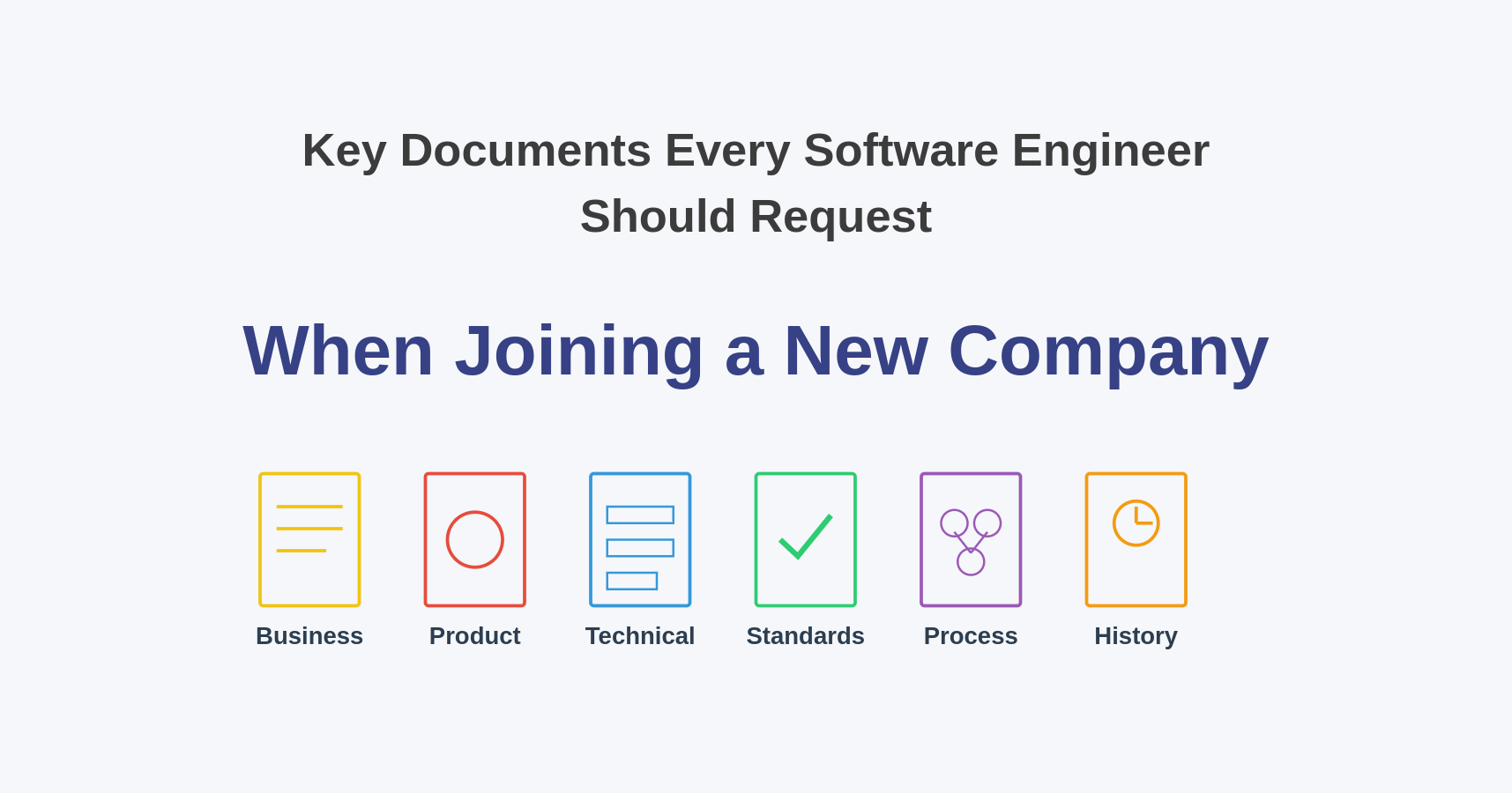Key Documents Every Software Engineer Should Request When Joining a New Company
Understanding the business isn’t optional for engineers—it’s the difference between building features and solving real problems.
Starting a new role as a software engineer can be both exciting and overwhelming. The faster you understand the business context and technical landscape, the quicker you’ll become a productive team member.
While it might feel more productive to dive straight into coding, investing time to understand the business and technical context pays enormous dividends. Don’t hesitate to request these documents - it shows initiative and a desire to contribute meaningfully to the company’s goals.
Here are the essential documents you should request during your first weeks.
1. Company and Business Overview
- Company mission, vision, and values
- Business model and revenue streams
- Organizational structure and key stakeholders
Understanding the company’s purpose and how it makes money provides crucial context for your technical decisions. Knowing the organizational structure helps you identify who to approach for different types of questions.
2. Product and Domain Knowledge
- Product documentation (features, use cases, target users)
- Domain-specific knowledge (industry reports, compliance requirements)
- Competitor analysis or market research reports
Engineers who understand the product and its users write better code. Domain knowledge helps you grasp why certain technical decisions were made and anticipate business requirements before they’re explicitly stated.
3. Technical Documentation
- Architecture Overview – How the system is structured (monolith, microservices, cloud, etc.)
- Codebase Documentation – High-level repo structure and guidelines
- API Documentation – Internal/external APIs and how they interact
- Database Schema – Tables, relationships, and commonly used queries
- DevOps & CI/CD Pipelines – How code is built, tested, and deployed
These technical documents form the foundation of your day-to-day work. A good understanding of the system architecture and how components interact will save countless hours of confusion later.
4. Development Standards and Guidelines
- Coding standards and best practices
- Version control (Git workflow, branching strategy)
- Security guidelines and compliance policies
- Testing strategy (unit, integration, end-to-end testing)
Every engineering team has its own way of working. Understanding these standards upfront helps you integrate your code smoothly and avoid unnecessary review cycles.
5. Onboarding and Processes
- Developer onboarding checklist
- Task management process (Agile, Scrum, Kanban, etc.)
- Incident management and escalation procedures
- Internal communication tools and protocols
Knowing how work gets done is as important as knowing what to work on. These documents help you navigate team processes and communicate effectively.
6. Past Issues and Learnings
- Known technical debt and challenges
- Previous post-mortems and incident reports
- Documentation on legacy systems and migration plans
The history of a codebase reveals a lot about its current state. Understanding past challenges and decisions helps you avoid repeating mistakes and provides context for existing quirks in the system.
Conclusion
Remember that documentation may not always be perfect or up-to-date. Supplement these materials with conversations with team members who can fill in the gaps and provide the “unwritten rules” that make teams function effectively.
By systematically working through these resources, you’ll build a solid foundation of knowledge that will accelerate your contributions and help you make better technical decisions aligned with business goals.
